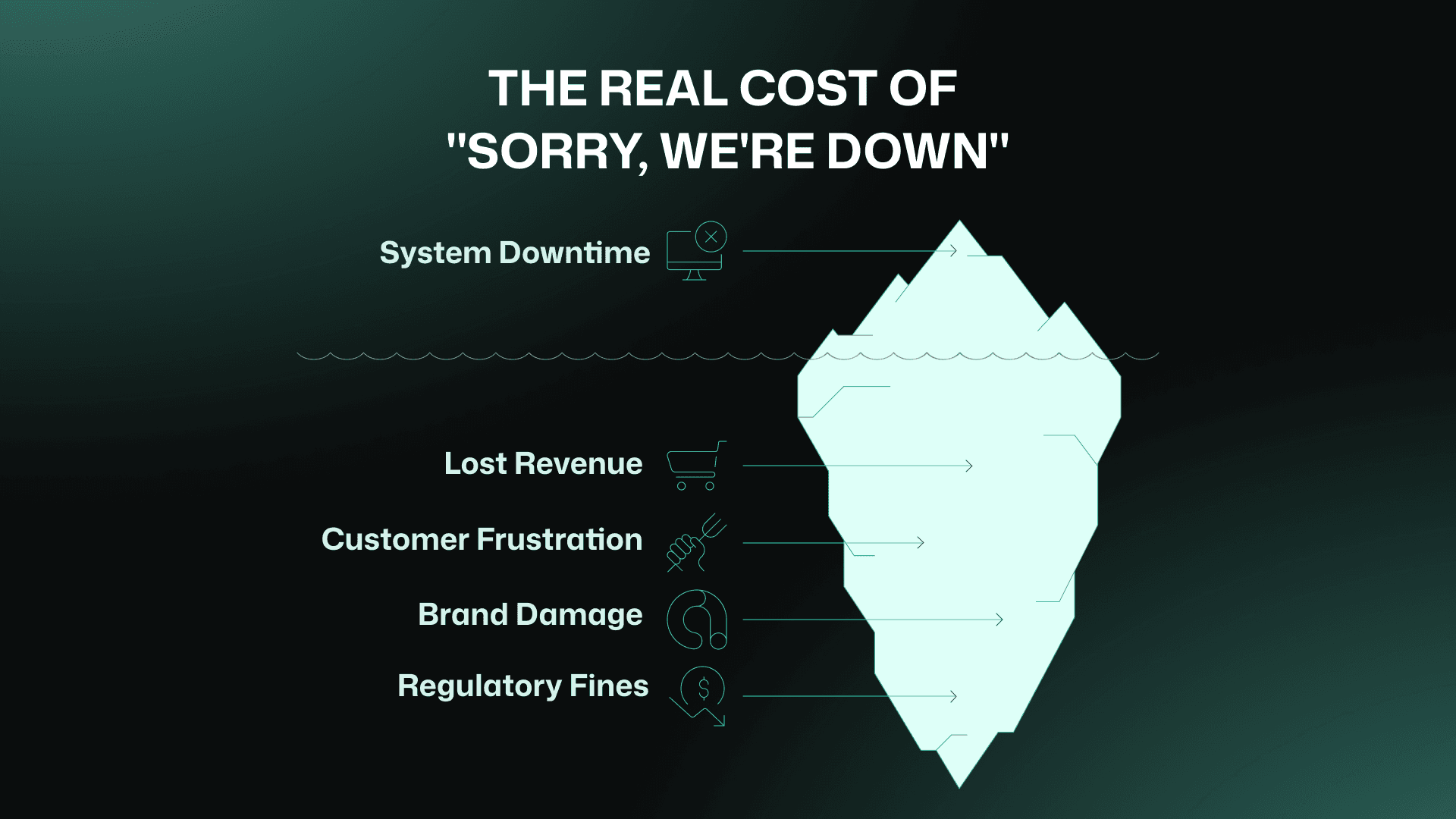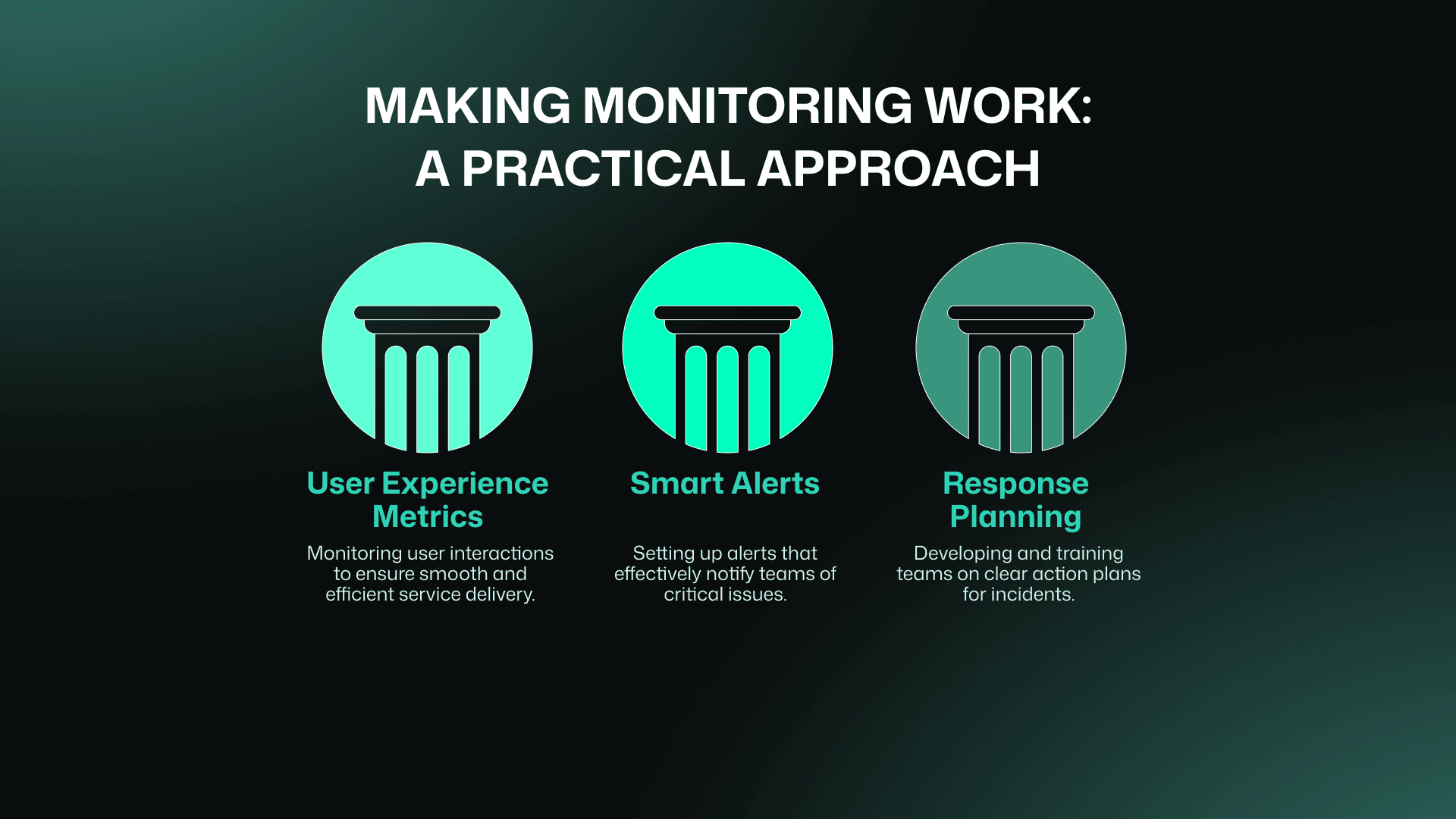The Revenue Cost of Downtime: Proactive Monitoring for Critical Systems

The Revenue Cost of Downtime: Proactive Monitoring for Critical Systems
Gone are the days when system outages were just IT headaches. Today, every minute of downtime burns through your revenue. Let's talk about why uptime monitoring isn't just about avoiding technical problems – it's about protecting your bottom line.
The Real Cost of "Sorry, We're Down"

Picture this: It's Black Friday, and your e-commerce site crashes. Or imagine you're a bank, and your payment processing system freezes during lunch hour. These aren't just inconveniences – they're revenue killers.
When systems go down, the impact ripples throughout your business. E-commerce companies watch helplessly as customers abandon their full shopping carts and head to competitors. Banks face a flood of frustrated customers who can't access their money. Trading platforms lose millions when investors can't execute time-sensitive trades.
But the damage goes deeper than just lost transactions. Your brand takes a hit. Customer trust erodes. And in regulated industries like banking and finance, you might face hefty fines for not meeting service standards.
Why Traditional Monitoring Isn't Enough
Running system checks after something breaks is like closing the barn door after the horse has bolted. It's too late. Modern businesses need to spot problems before they impact customers.
This is where proactive monitoring comes in. Think of it as your business's early warning system – like having a weather forecast instead of just looking out the window when it starts to rain.
Making Monitoring Work: A Practical Approach

Setting up effective monitoring doesn't have to be complicated. Here's what you need to succeed:
1. Watch the Right Things
Start with user experience metrics – they're your window into how customers actually interact with your services. Monitor how quickly pages load, how fast transactions process, and where users might be struggling. Keep a close eye on your system performance, tracking everything from server response times to database operations. Your network health deserves special attention too – bandwidth usage, connection stability, and data transfer rates can reveal potential issues before they become problems.
For e-commerce sites, this means tracking checkout completion rates and page load times during peak shopping hours. Banking apps need to monitor mobile transaction success rates and login response times. Investment platforms should track order execution speeds and real-time quote delivery.
2. Set Smart Alerts
Your monitoring system is only as good as its ability to notify you about important issues. Focus on alerts that truly impact your business operations and customer experience. Make sure these notifications reach the right team members who can take immediate action.
Be strategic with alert thresholds to prevent alert fatigue – your team should trust that when an alert comes through, it needs their attention. Consider implementing different severity levels so critical issues get the urgent response they need.
Plan Your Response
Develop clear, documented action plans for different types of incidents. Your team should know exactly what steps to take when specific issues arise.
E-commerce teams should have specific procedures for handling holiday season traffic spikes. Banks need clear protocols for responding to payment system outages while trading firms must maintain step-by-step guides for market data disruptions.
Invest time in training your staff – everyone should understand their role in the response process and feel confident in executing it. Most importantly, treat each incident as a learning opportunity. After resolving an issue, analyze what happened and how you can prevent similar problems in the future. Use these insights to refine your monitoring strategy and response procedures continuously.
Enter Bubobot: Monitoring Made Simple
As a leading pingdom alternative, Bubobot understands these challenges because it was built by tech professionals who've faced them firsthand. Our uptime website monitoring solution works tirelessly to protect your systems, operating 24/7 to catch issues before they impact your business.
What sets Bubobot apart is its intuitive approach to system monitoring. The platform provides real-time insights without overwhelming you with technical complexity. As your business grows, Bubobot's flexible architecture scales alongside you, adapting to your changing needs.
You don't need extensive technical expertise to benefit from Bubobot's capabilities. The platform handles complex monitoring tasks while presenting clear, actionable insights when you need them most.
Taking Action: Your Next Steps
Protecting your revenue through better monitoring starts with understanding your current setup. Take time to identify which systems are most critical to your business operations. Consider how tools like Bubobot could enhance your monitoring capabilities. Begin with monitoring your most essential services, then expand your coverage as you see results.
Remember, every minute of downtime costs money. But with the right monitoring strategy and tools, you can catch problems before they catch you.
Want to learn more about protecting your business with smart monitoring? Try Bubobot for Free.